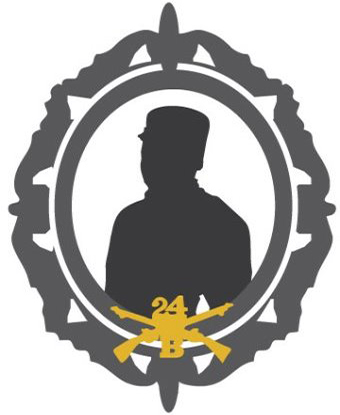Last updated: November 19, 2021
Person
Richard Williams

NPS image/E. Grover
Little is known about Sergeant Richard Williams. Records show that he was born on November 7, 1864. At some point prior to 1898, Williams enlisted in the US Army and was eventually assigned to Company B of the 24th Infantry. The 24th Infantry was one of the Army's four Black regiments; the soldiers of these regiments became known as "Buffalo Soldiers."
Like his peers, Buffalo Soldiers like Mack Stanfield and Ezekiel Hill, Williams likely served at military post throughout the American West. By 1898, he had become a corporal.
On April 21, 1898, the United States declared war against Spain, beginning the Spanish-American War. On April 20, one day before the official declaration of war, the 24th Infantry left Fort Douglas, Utah, for the American South. They arrived in Georgia on April 24, and proceeded to Tampa, Florida, where they arrived on April 30. The 24th Infantry then joined an expeditionary force to Cuba that included 3,000 Black regulars and a total of 17,000 troops.
The Army's four regiments of Buffalo Soldiers served in Cuba for four months and fought in several battles, including the famed Battle of San Juan Hill. Captain Henry Wygant, the white commander of four of the 24th Infantry's companies, including Company B, described their service in this battle as "Noticeably brave and heroic." In his After Action Report, Wygant specifically mentioned Williams' bravery during this battle, writing:
In the autumn of 1898, the 24th Infantry returned to the United States. In April 1899, Williams and Company B arrived at Vancouver Barracks. There they spent the next thirteen months engaged in the regular assignments of garrison duty: drilling, practicing marching and marksmanship, improving the post's infrastructure, performing maintenance and clerical work, and attending the post school."Corpl. Richard Williams, Company B, Twenty-fourth Infantry, who was under my observation during the whole time we were exposed to fire, is worthy of especial mention for bravery and fidelity to his commanding officer."
In May 1899, Williams, now a sergeant, and his fellow soldiers and officers of Company B, received a special assignment. That month they were deployed to Wardner, Idaho, where military troops were being used to enforce martial law in hopes of suppressing a labor dispute between mine owners and unionized members of the Western Federation of Miners. Williams and Company B would have been responsible for controlling telegraph and railroad lines, and guarding civilians who had been arrested as part of the city's martial law enforcement. In June 1899, Williams received another special assignment: leading a detachment escorting military prisoners to Fort Leavenworth, Kansas.
Company B of the 24th Infantry left Vancouver Barracks in May 1900. On October 16, they were transferred to Fort Wright in Spokane, Washington, and then to the Presidio of San Francisco. From California, they were deployed to the Philippine Islands, where they served for two years in the Philippine War.
Sometime after leaving Fort Wright, Williams transferred to Company I of the 24th Infantry. Richard Williams retired from the Army as a 1st Sergeant. He died in 1935 at the age of 70, and was buried at the San Francisco National Cemetery alongside his wife, Emily.
Most of what we know about Richard Williams, and the other soldiers of Company B, comes from official military and other government documents. We continue to search for documents that show the soldiers' point of view. If you have any information or family stories about Company B, 24th Infantry, US Army, please contact us.
